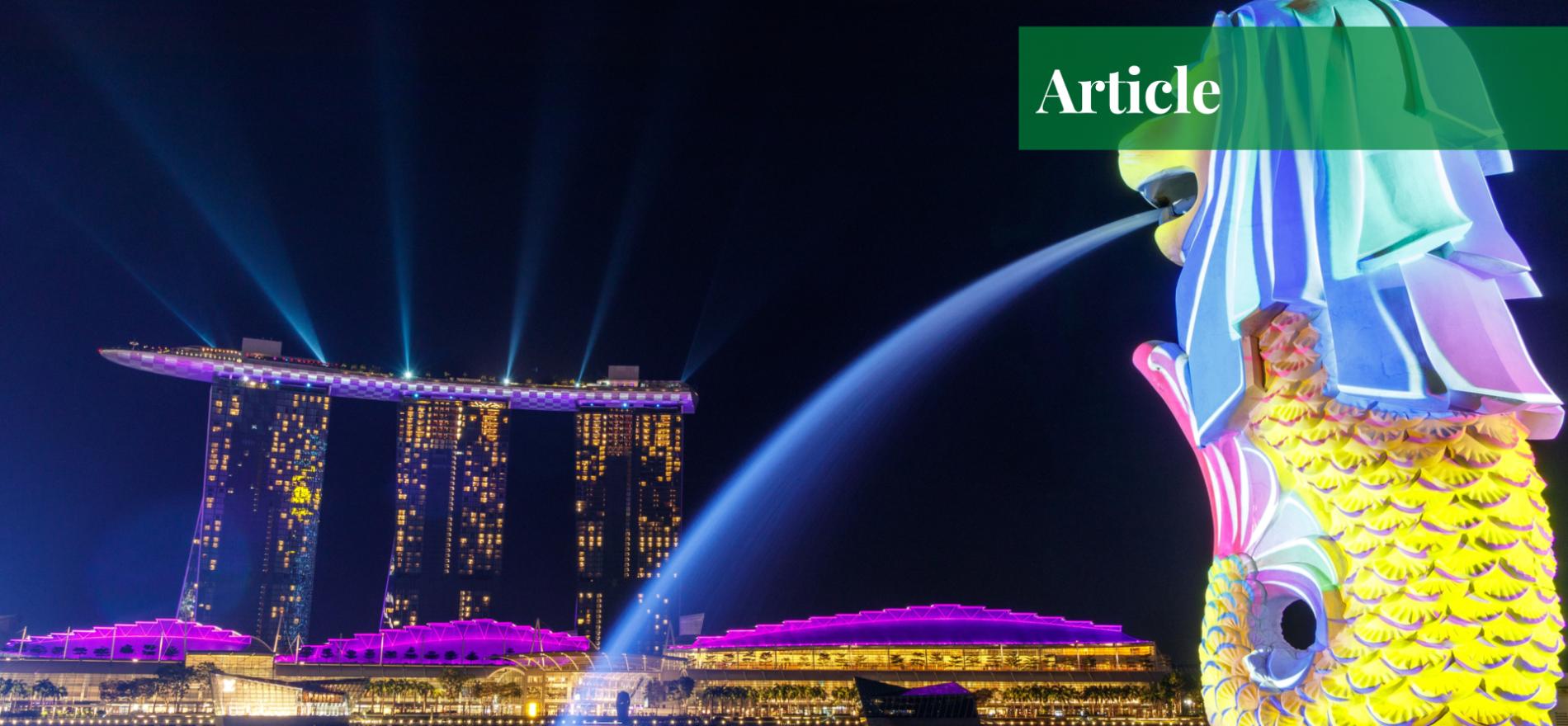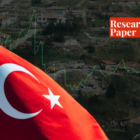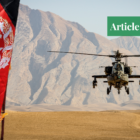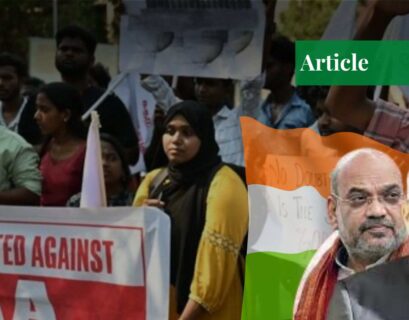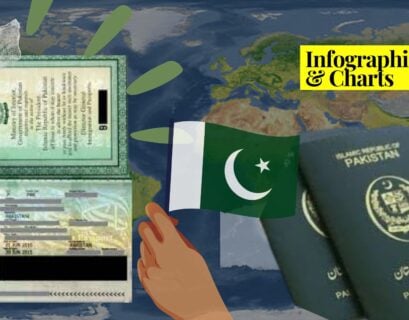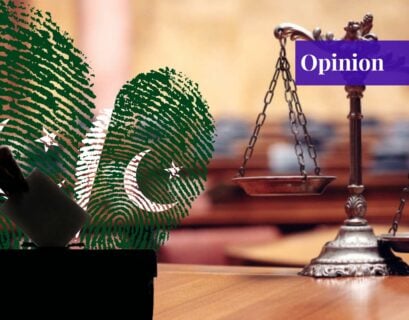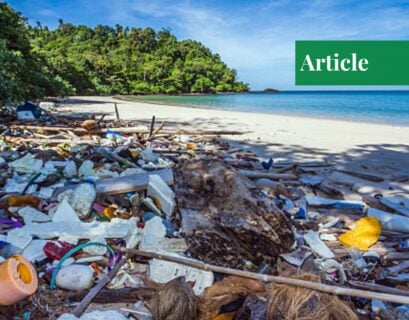Ms Afifa Iqbal has a keen interest in identity politics, colonialism and post-colonial development. She is currently working as a Research Assistant at ITU while pursuing her postgraduate studies in Development, Technology and Policy. She is a Gold Medalist in Political Science from the University of Punjab.
Introduction
“We ask ourselves, what is a Singaporean? In the first place, we did not want to be Singaporeans. We wanted to be Malayans. Then the idea was extended and we decided to become Malaysians. But twenty-three months of Malaysia—a traumatic experience for all parties in Malaysia—ended rather abruptly with our being Singaporeans.”
These are the words of Lee Kuan Yew, the founding father of Singapore, and they represent the true extent of the identity crisis faced by the city-state at the time of its independence in 1965. Today, hardly anyone remembers Singapore as a city-state expulsed from Malaysia. Au contraire, many people remember Singapore for its high living standards, stellar public administration, and commendable infrastructure.
According to the Institute for Management Development’s (IMD) World Competitiveness Rankings 2021, the Singaporean economy is ranked as the 5th most competitive economy worldwide. Singapore also ranks 5th in the world as a recipient of foreign direct investment (FDI). It received 92 billion dollars in FDI in 2019. Its per capita GDP stands at $82,503.
While it is no small feat to make economic progress of this magnitude in such a short period, doing so while interweaving a solid national identity that brought together a multi-faith society is a laudable achievement. States like Pakistan can learn a great deal from the Singaporean model, particularly with regards to constructing a sustainable national identity and forging peaceful co-existence. So, the question is, how did Singapore perform the Singapore miracle, and what lessons can be drawn from the Singaporean model?
When analyzing Singaporean Identity, four variables are particularly important—the concept of citizenship, the role of grievances and colonial baggage, holistic model of education, and the robust public sector. These variables may look unrelated at first glance, but they all played a crucial role in the creation and sustenance of the national identity of an otherwise plundered hinterland destined to remain stuck in the lowest tiers of the global economy.
The Singaporean Model and the Concept of Citizenship
In most capitalist democracies, the normative conception of citizenship is centered upon “conferring rights”. Michael Hill and Lian Kwen Fee, in their seminal work “The Politics of Nation Building and Citizenship in Singapore”, defined this individualist model of citizenship as being “emancipatory, expansionary and centered on the autonomous individual”. On the face of it, this concept seems to empower the citizenry and appears as the vanguard of their rights.
However, it falters quickly when burdened with creating national identity in a multi-faith society that has borne the brunt of colonialism. The operating principle of colonial reign, “divide and rule”, and the persistent ensuing socio-political patterns—delineation of administrative responsibilities and distribution of privileges along ethno-tribal lines—created by the local elites, give rise to patron-client economy and polity.
In such societies, when the welfare state model is implemented, it becomes easy to get busy in feathering one’s own nest than concerning oneself with the future of the collectivity. As a result, such societies become the living proof of the “Mathew effect“—the rich get richer and the poor become poorer. This pattern has played out in states like India and Pakistan via patron-client polity and economy.
The leadership of Singapore, at that time, understood this and hence, conceived a duty-based model of citizenship which was later on described as the “civic republican model” by Adrian Oldfield, a Salford University professor. This model prioritizes collective goals over individual goals thereby creating “active citizens” who recognize communal goals as their own.
This model also formed the basis of the Singaporean economic model. Instead of adopting a socialist or capitalist approach, the leadership devised Singapore’s own brand of “regime-controlled capitalism“. This interventionist approach of the government proved crucial in controlling the excesses of market forces and shielding the populace from their adverse impacts.
The government also retained control over wages and labor, all the while allowing the inflow of foreign direct investment to foster “multinational enterprise dominance” essential for manufacturing-driven exports. The multinational enterprises created labor-intensive jobs and drastically reduced unemployment. The stimulated labor productivity enabled the government to enforce high domestic savings which were then utilized for infrastructural development.
Exemplary infrastructure, government-controlled wages, and domestic savings, and Singapore’s location on main routes of east-west communication allowed further inflow of FDI which contributed to its economic development. In other words, Singapore combined economic planning with the market in a creative way and the duty-bound citizenry helped in enabling this indigenization of the economic model.
Holistic Model of Education
At the grassroots level, the leadership of Singapore operationalized the civic republican model through an education curriculum designed not only to integrate the multi-faith society but also to ingrain a sense of duty towards the Singaporean state. However, it was not an assimilationist undertaking, instead, it was an inclusive educational design aimed at creating Singaporean values and identity.
Another important tidbit to remember about the Singaporean national curriculum is that it was neither state propaganda—as is the norm in authoritarian states—nor revisionist in nature—as is the norm in post-colonial states trying to build up national prestige by fabricating historical accounts and casting themselves in Herculean roles. To this end, a national education system was designed which played a central role in the political socialization of students.
The “National Education” program, launched in 1997, further strengthened the national education system as well as the leadership’s version of Singapore’s history. Another important step has been the introduction of various civic education programs which continued to change with changing socio-political requirements i.e. Education for the Living (1970s), the Religious Knowledge (1980s), the Civics and Moral Education (1990s). Moreover, four official languages are taught (and recognized) in Singapore, a nod to its multilingual populace.
Consequently, the Singaporean citizenry has not only been well-integrated into the society but has also developed a “deep sense of duty” towards the state and its institutions – as is concluded by Michael Hill and Lian Kwen Fee – without having to resort to hyper-nationalist narratives that often end up alienating certain socio-economically marginalized communities in multi-faith societies.
Robust Public Sector
Having steered away from the welfare state model, Singapore has maintained a large and robust public sector, largely unaffected by corruption and other bureaucratic malaises, and the romanticization of public sector jobs that plague other post-colonial states. The Singaporean model reveals that one of the most interesting (and easily replicable) steps taken by the Singaporean leadership to create duty-bound and genuinely patriotic public officials was the initiation of “mass civic projects’”, such as cleaning a particular site.
In addition to cultivating a can-do attitude among the public officials, these projects facilitated the engagement of public officials with politicians thereby creating a two-way flow of information. Consequently, with time, both became cognizant of each other’s weaknesses and strengths rather than getting trapped in their respective professional echo chambers. Another important step taken by the leadership was concocting an effective anti-corruption regime through the creation of strong accountability institutions, built upon colonial-era regulations fine-tuned to Singapore’s needs.
As Lee Kuan Yew stated in 2000, “When the PAP government took office in 1959, we set out to have a clean administration. We were sickened by the greed, corruption, and decadence of many Asian leaders. We had a deep sense of mission to establish a clean and effective government…” These steps not only shielded the bureaucracy from developing a predatory posture but also helped in defining and maintaining institutional boundaries as well as service delivery.
The Role of Grievances and Colonial Baggage
It is no secret that Singapore was a hinterland with weak infrastructure, but “separation” from Malaysia could have been the final nail in the coffin of the island state’s psychological fabric. Historical accounts suggest that it is fairly easy for newly minted states to get sucked into the grievances and colonial baggage of such magnitude. Hence, the Singaporean leadership, before starting in, addressed this issue.
Instead of building a false narrative based either on faux machismo or unavoidable victimhood, the bare facts were presented to the public in a way that the public can let go of grievances and move forward all the while being aware of its history. In “The Politics of Nation Building and Citizenship in Singapore”, Hill and Fee observed. “These events have been encapsulated in the mythology of the nation-building process and the political leadership has had constant recourse to them, and to their implications for the survival of the state, over the succeeding years.”
In essence, a survivalist proto-identity was created by the leadership which facilitated the establishment of an inclusive and unifying national curriculum, a public sector delivering stellar services, and a duty-bound citizenry, thereby, consolidating a sustainable national identity without having to resort to hyper-nationalistic rhetoric.
Recommendations for Pakistan
Now, from the look of it, Pakistan and Singapore have nothing in common except for colonial history. Moreover, Pakistan’s identity crisis and geopolitical issues are relatively more complex than those of Singapore. However, some aspects of the Singaporean model pertaining to nation-building and identity construction provide crucial lessons for Pakistan.
Inclusiveness over Assimilation
Since independence, Pakistani leadership has formulated and implemented various assimilationist policies with disastrous results. The Singapore model proves that pluralist and inclusive policies work much better than assimilationist ones. More so, the use of educational curriculum to further such policies (through distortion of historical facts) has aggravated the identity crisis.
With the buzz around the single national curriculum, policy-makers can exploit this opportunity to create an inclusive national curriculum that neither distorts historical facts nor marginalizes or antagonizes any community. Furthermore, instead of making the issue of a single national curriculum a product of a single party’s efforts that antagonizes (intentionally or unintentionally) other parties, an inter-party working committee can be established. While doing so, a nod to history and the founding father’s vision of Pakistan would help in smoothing things over with the aggrieved public.
Recognizing the Multi-faith and Multi-lingual Nature of Pakistan
However, the aforementioned effort alone is not enough. It is high time the leadership recognized the multi-faith and multi-lingual nature of Pakistani society. To this end, following the Singaporean model, Pakistan can at least start teaching regional languages as part of its national curriculum.
For if two people belonging to two regions of the same country cannot even understand each other’s language, then, they are highly unlikely to understand the thought process, local narratives, and grievances of each other. This, in turn, makes it difficult for people to empathize with one another while making them much more susceptible to the highly charged and twisted narratives of the demagogues.
Overcoming Colonial Grievances
Now is the time to let go of this grievance-oriented psyche propped up by colonial baggage. If Pakistan wants to move forward, it needs to stop scratching the old wounds. Having said that, we need not forget our history or past trauma, we just have to look at them from a constructive perspective. For this purpose, the infamous history textbooks can be revised to offer a nuanced version of history.
The powers that be must realize that if they continue to impose the same distorted view of history, then, it will not only present difficulties in terms of inter-state dialogue but also continue to hold the country back by feeding into the grievance-oriented and victimized state of the nation. As mentioned above, Singapore provides a good example in this regard.
Reforming the Public Sector
Another cardinal sin has been the politicization of accountability institutions and their subsequent use for political victimization. Part of what makes this politicization possible is the existence of the patron-client system and its implicit role in shaping young minds. To do away with this anachronism, the first step could be the introduction of civic education programs because unless and until civic duty takes precedence over familial ties, Pakistan cannot get a clean break from its patron-client polity. However, if this program is to bear fruit, it must be flexible and subject to change with the change in the socio-political needs of the society.
Finally, as far as the public sector is concerned, mass civic projects can be a good start as they can help in building a “can-do” attitude among public officials and provide an opportunity for them to interact with politicians on an equal footing. Moreover, these projects will also help repair the damaged reputation of the public officials among the masses. The ruling party can easily initiate such projects, for the public is already tired of the distant attitude of the public officials.
A by-product of these undertakings can be the beginning of the transformation of Pakistan’s citizenry into a duty-bound one. Having stated that, Pakistan’s leadership needs to start somewhere to solve the myriad of problems faced by the state, and the Singapore model may hold some clues to solve these issues.
If you want to submit your articles and/or research papers, please check the Submissions page.
The views and opinions expressed in this article/paper are the author’s own and do not necessarily reflect the editorial position of Paradigm Shift.
